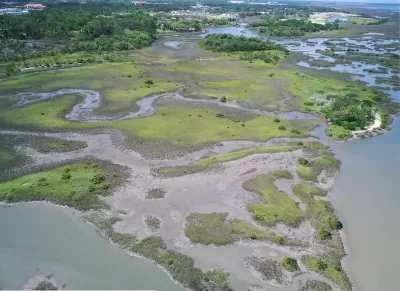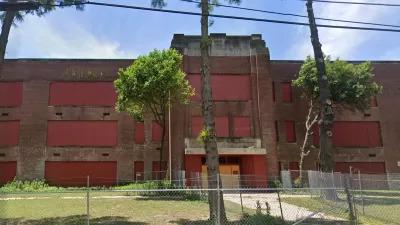In the late 1700s, Fort Mose was home to enslaved African people seeking freedom from the English colonies farther north along the Atlantic coast.

The first legally sanctioned free Black settlement in the United States — predating the Civil War by a century — will soon offer visitors a life-sized replica of the complex known as Fort Mose, which has been buried under earth and water on the Florida coast.
Sarah Enelow-Snyder describes the history and rediscovery of the fort in The Washington Post, writing, “An early iteration of the Underground Railroad in the 17th and 18th centuries brought enslaved people from English plantations in the Carolinas down to freedom at Fort Mose, which was controlled by Spanish settlers.”
After the first freedom seekers arrived in St. Augustine in 1687, more followed. Once the exodus of enslaved people began threatening the English economy to the north, the English attacked the fort multiple times, and it was eventually abandoned. “Starting in the 1980s, archaeologists uncovered the fort’s moat, clay-covered earth walls, and interior wooden buildings. They found artifacts including gun flints, flattened bullets, metal buckles, ceramics, glass bottles, burned seeds and bones from food sources.” The new replica will reimagine the fort as it would have looked when it was first built based on existing information and other Spanish forts.
FULL STORY: First free Black settlement in U.S., long buried, is being resurrected

Trump Administration Could Effectively End Housing Voucher Program
Federal officials are eyeing major cuts to the Section 8 program that helps millions of low-income households pay rent.

Planetizen Federal Action Tracker
A weekly monitor of how Trump’s orders and actions are impacting planners and planning in America.

Ken Jennings Launches Transit Web Series
The Jeopardy champ wants you to ride public transit.

California Invests Additional $5M in Electric School Buses
The state wants to electrify all of its school bus fleets by 2035.

Austin Launches $2M Homelessness Prevention Fund
A new grant program from the city’s Homeless Strategy Office will fund rental assistance and supportive services.

Alabama School Forestry Initiative Brings Trees to Schoolyards
Trees can improve physical and mental health for students and commnity members.
Urban Design for Planners 1: Software Tools
This six-course series explores essential urban design concepts using open source software and equips planners with the tools they need to participate fully in the urban design process.
Planning for Universal Design
Learn the tools for implementing Universal Design in planning regulations.
Ada County Highway District
Clanton & Associates, Inc.
Jessamine County Fiscal Court
Institute for Housing and Urban Development Studies (IHS)
City of Grandview
Harvard GSD Executive Education
Toledo-Lucas County Plan Commissions
Salt Lake City
NYU Wagner Graduate School of Public Service





























